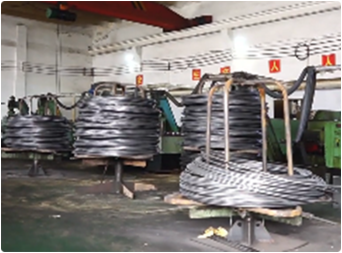Jul . 30, 2024 18:17 Back to list
Comprehensive Guide to Anchor Bolt Sizes with Metric Measurements for Construction Projects
Understanding Anchor Bolt Size Chart in Millimeters
Anchor bolts are critical components in construction and engineering, providing essential support and stability by securing structural elements to concrete foundations. Understanding the size and specifications of anchor bolts is crucial for ensuring the safety and longevity of structures. This article will explore anchor bolt size charts in millimeters, outlining their importance, types, and key considerations when selecting the appropriate anchor bolt for your project.
What are Anchor Bolts?
Anchor bolts are heavy-duty fasteners used to attach structural elements like steel columns, frames, and machinery to concrete or masonry surfaces. They come in various shapes, sizes, and materials, each tailored for specific applications and load requirements. The designs typically include a threaded end for nut installation, providing a strong mechanical connection.
Importance of Size Charts
Size charts for anchor bolts, often presented in millimeters, help engineers and architects determine the dimensions necessary for their specific applications. These charts provide essential data, including bolt diameter, length, thread size, and load ratings, ensuring that the selected hardware meets the structural requirements of a project. Using the correct size bolt is crucial; under-sizing can lead to structural failures, while oversized bolts can result in wastage and added costs.
Standard Sizes
Anchor bolts come in various standard sizes, which can be detailed in a size chart. For example, typical diameters may range from M12 (12 mm) to M30 (30 mm) and beyond, with corresponding lengths that can vary from 100 mm to over 1000 mm, depending on the application. The most common sizes listed in anchor bolt size charts will include
anchor bolt size chart in mm

- M12 Suitable for light to medium-duty applications. - M16 Often used in residential construction or smaller industrial projects. - M20 Ideal for moderate structural loads. - M24 Commonly applied in heavy-duty installations. - M30 and larger Utilized in high-load scenarios like bridge construction, heavy machinery anchoring, and industrial applications.
Material Considerations
Alongside size, the material of the anchor bolt is vital for its performance. Common materials include carbon steel, stainless steel, and galvanized steel, each offering different levels of corrosion resistance and tensile strength. The choice of material should correlate with environmental conditions and the specific demands of the application. For instance, stainless steel bolts are preferable in coastal areas due to their high corrosion resistance, while carbon steel may suffice in less demanding environments.
Load Ratings
Each size of anchor bolt has distinct load ratings that indicate how much weight the bolt can safely support. These ratings are influenced by factors such as bolt diameter, length, material, and embedding depth in concrete. It is essential to refer to the manufacturer’s specifications and load tables found in the size charts to determine the appropriate anchor bolt rating for your project.
Conclusion
In conclusion, understanding anchor bolt size charts in millimeters is essential for anyone involved in construction or engineering. These charts help identify the right dimensions, materials, and load ratings necessary for ensuring a secure and stable connection between structural elements and their foundations. By prioritizing the selection of the correct anchor bolt size and type, engineers can significantly contribute to the safety and durability of their projects, ultimately leading to successful construction outcomes. Whether for residential, commercial, or industrial applications, the right anchor bolt is a small but vital component that plays a significant role in structural integrity.


